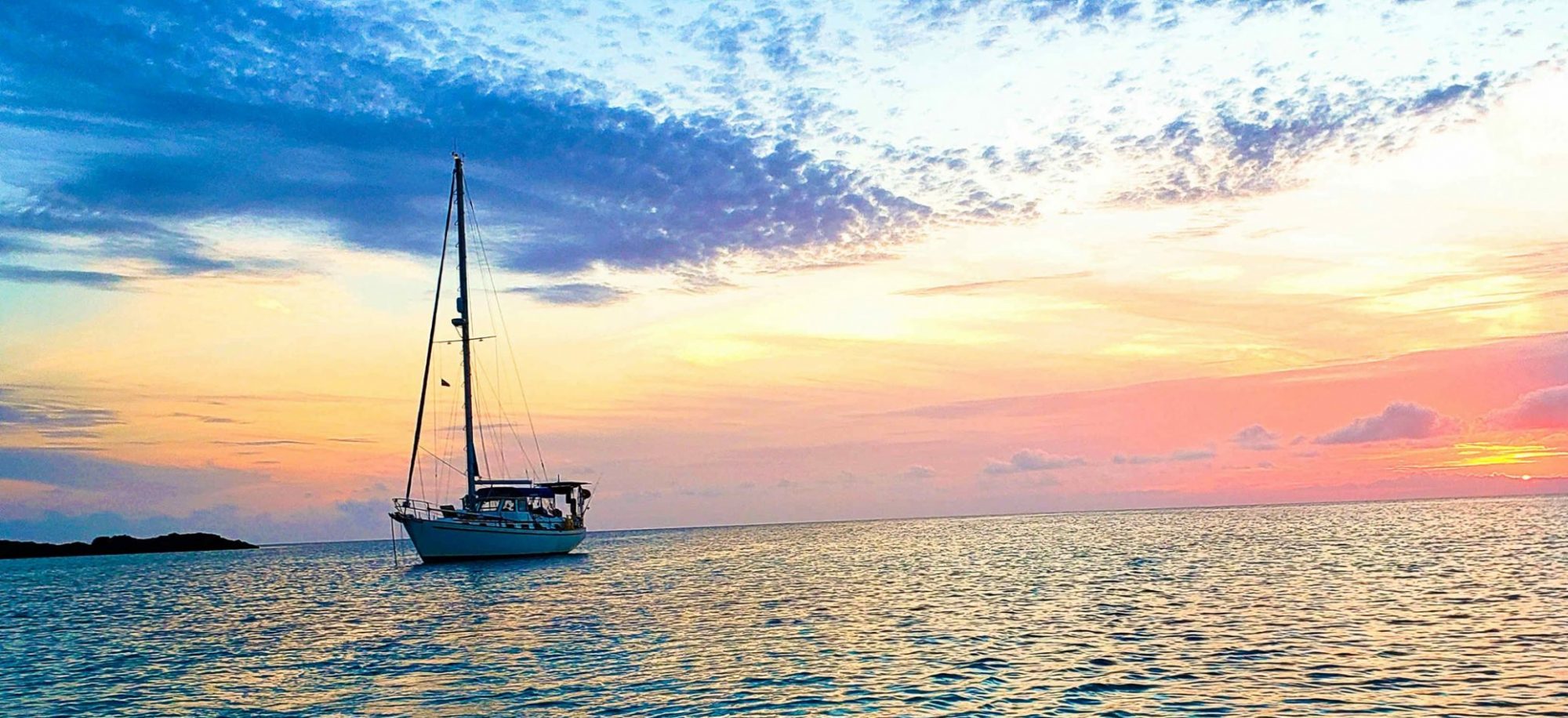In the last post I talked of finding holes in the cockpit floor. It looked like someone used hard board with the holes in it as a pattern to drill into the laminate. My solution will take care of two problems. First the I need to fix the holes to fix the leak. Second I want to give the cockpit a slight slope from fore to aft so that when level rain water will run out the self bailing cockpit.

I used the grinder to get below the paint and resin that had been poured over the cockpit. Once glass on the floor had been exposed, I ground up the sides 2 inches. It turns out that the hole pattern only goes about a quarter of the way down the cockpit. After getting down to clean glass, I filled the cut through the laminate with 12oz cloth and epoxy; 3 layers. I then laid a full sheet of 12 oz fabric over the holes (which were filled with epoxy and colloidal silica) and wet it out with West System. This layer, designed to seal the cockpit, overlapped the floor by 2 inches; enabling me to tie the floor into the sides. For good measure, two additional layers of glass were laid down.
To get the slope I wanted I cut a piece of 1/2 inch marine grade plywood. The plywood was sealed all around (faces and edges) with 2 coats of epoxy. Its runs across the cockpit where the cockpit forms part of the cabin trunk (at the companionway). The plywood was placed on a bed of epoxy/colloidal silica. Microfibers and epoxy filled in any gaps. On top, of the plywood are two layers of 12 oz fabric, where the fabric hits the sides I created a fillet with the same filler. Of course, the epox

y is “painted” on until the weave doesn’t show through.
From this plywood step, I used micro-fibers and epoxy to make a past to create a slope tying the step into the original floor. Finally, fairing compound (west system epoxy with west system filler) was used to even things out. After lots of sanding it was time to put the final coat on.
I decided to go with Kiwi grip for the non-skid. From what I have read and testimonials online, its easy to use and long lasting. I was very cautious about the prep. I dewaxed the sides (just in case). I sanded all surfaces, paying special attention to those areas that had any shine to them, at all. Finally, I used a tac rag to pick up dust, until the rags came back clean (lost of acetone and rags used). Finally, I was ready to apply the kiwi grip.
Kiwi grip is very thick. I applied it with a trowel and smoothed it along the surface using a notched trowel. Once the paint is down, one simply rolls on the texture. I rolled the paint “hard the first two times through; subsequent rolling was with a light touch. The only difficult I had was where the cockpit sides met the floor. In these areas, the roller would rub the surface I wasn’t working. But a little patience and it was all on. The tape was removed immediately after painting.

The roller tends to flick the paint every where you don’t want it. Luckily, just a little water and a rag gets rid of the offending paint. I applied the paint under a cover, in about 78 to 83 degrees Fahrenheit. It should not be applied in temperatures exceeding 90 degrees. Drying time varies, but I hear that 72 hours and you can walk on it with boat shoes. I don’t think the pattern is too aggressive, but I will need bare feet to make sure. Not sure how to affect a change if it needs softening; but possible with a thinned overcoat of the paint might work.
I’ll report later on how well it holds up. Right now I am extremely pleased with the look of it and may considered recoating some of my non-skid on deck.
